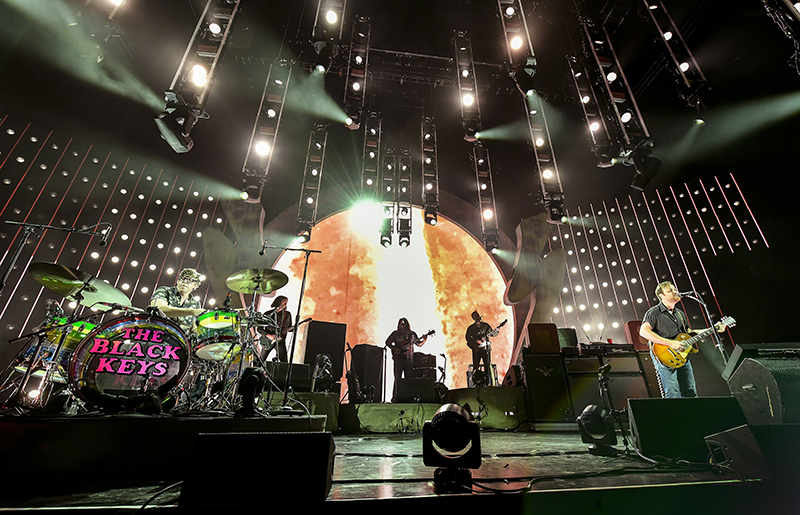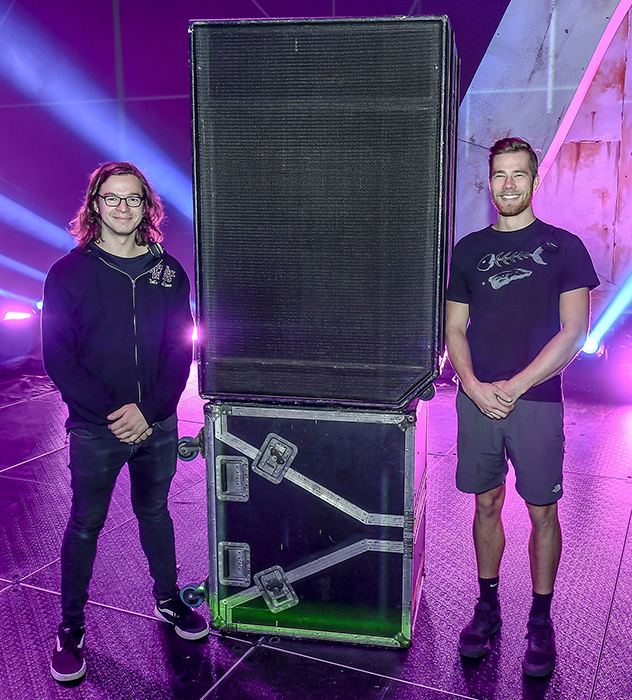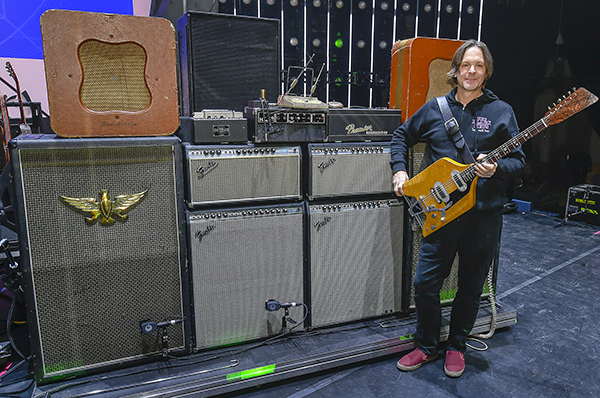
“If I had to take an educated guess, I’d say these old Maryland Sound boxes probably go back to at least the ‘70s,” Jensen says, taking a speculative stab at determining the date the cabinets were manufactured. “They’re the kind of thing you find in the back of someone’s shop covered with a sheet of plywood, tools and parts scattered across the top, everything smothered in a half inch of dust. These particular cabinets are prime examples of the breed, and sound great. Like a giant home stereo in a way.”

Jensen flies the first pair of these old warhorse enclosures downstage within his stage blueprint pointed back into the middle of the band at 45-degree angles. The second pair rest atop tipped monitor cases upstage, each focusing downstage to the center. Bringing the design back in touch with more recent developments, passive d&b V-Series point source loudspeakers provide ground-based side fill support, while 2-way M4 wedges (also from d&b) occupy strategically located spaces directly in front of the band members.
With his goal being to create a “universal head space” within which everyone on stage is listening to the same thing in a single sound field, Jensen uses a Midas PRO X console to parse out signals to his collective cabinets in a fashion where the V-Series boxes carry the load of drums and the remaining elements mete out everything else. d&b D12s provide the amplification.

“My overall intent with my mix is to place each source on stage in the approximate region of where it emanates,” Jensen says in clarifying his objectives. “I don’t use a lot of EQ, I let the musicians provide their own sound and tone. I’m here to capture an accurate sonic image of each moment, that’s all. The band has worked hard on their sounds and tone, it’s not my place to start altering any of that.”
Uncomplicated & Direct
Many among the crew note that this is either one of – or the – loudest show they’ve worked in memory, a fact that keeps everyone on their toes and vigilant for the times when invariably things will try to get away from them. Nonetheless, the methods, technology, and stagecraft that make it work are by design uncomplicated and direct.
“This crew lives by an ethos that doesn’t promote throwing a lot of things on the fire,” Jensen adds. “We all want to work with the source material first and foremost. If you start with the sound you want at the very beginning, everyone’s job is easier. You don’t want to ever find yourself using Band-Aid solutions. As an engineer you want to turn up the volume and find it’s already there. It’s really that simple.”
